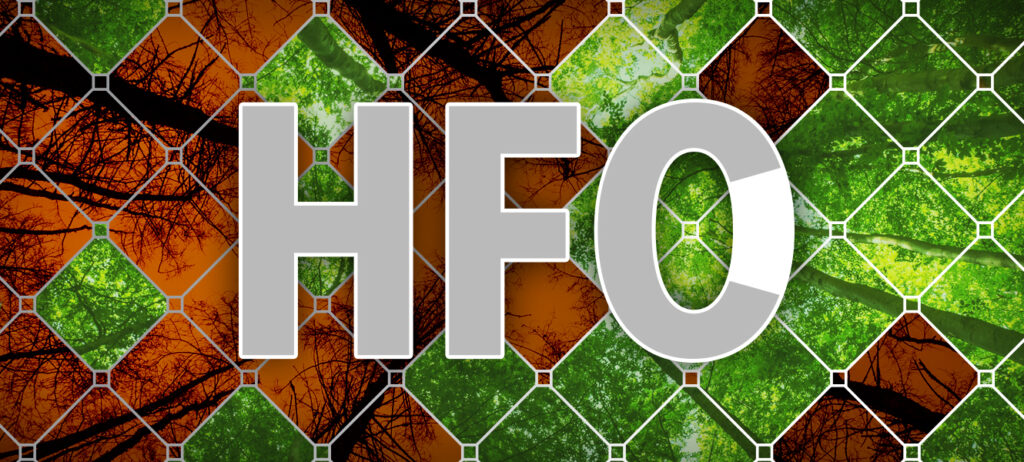
In early 2021, new regulations took effect in the U.S. to phase out harmful greenhouse gases called hydrofluorocarbons, or HFCs. HFCs are made up of fluorine and hydrogen atoms. They are found in blowing agents used in spray foam roof adhesive and insulation. The industrial chemical allows the material to “foam up,” expand, and deliver great thermal resistance (R-value). Hydrofluorocarbons are also found in air conditioning and refrigeration systems.
While HFCs have great thermal resistance, they also come with high global warming potential (GWP). Products with high GWP trap more heat in the earth's atmosphere and thus contribute more to global warming. Long story short — HFCs are bad for the environment.
When something is bad for the environment, there's a good chance it's bad for you, your crew, and your community, too. Here we explain the importance of these changing climate regulations and what you can do to keep your roofing operations easy, profitable, and regulation-compliant.
The Dangers of HFCs
HFCs destroy the earth's protective ozone layer. The ozone layer essentially makes life possible on earth. Without this protective layer, the earth is more susceptible to the sun's harmful ultraviolet rays. People are more at risk of skin cancer and immune system damage, and the earth and oceans can suffer.
HFCs also trap heat, causing the earth to warm and the climate to change. The effects of climate change include:
- Rising sea levels
- Loss of natural habitats and species
- More rain
- Higher heat stress in summer
But wait. Can a simple blowing agent in a roof spray foam really be so harmful? Yes.
“Though HFCs currently represent around 1% of total greenhouse gas,” explains the Climate and Clean Air Coalition, “their impact on global warming can be hundreds to thousands of times greater than that of carbon dioxide per unit of mass.”
The U.S. Environmental Protection Agency estimates that global HFC consumption in the building foams sector accounted for about 38 million metric tons of carbon dioxide equivalent in 2010.
The HFC phasedown has the potential to reduce 900 million metric tons of carbon dioxide equivalent over the next 15 years, reports the Rhodium Group.
HFC Environmental Regulations
HFCs have long been noted as harmful. The Kyoto Protocol first reported HFCs as controlled greenhouse gases in 1997.
The Montreal Protocol, passed in 1989, phased out ozone-depleting refrigerants (chlorofluorocarbons (CFCs) and hydrochlorofluorocarbons (HCFCs)). Hydrofluorocarbons (HFCs) replaced CFCs and HCFCs in many applications. But HFCs are still harmful greenhouse gases.
In 2016 in Kigali, Rwanda, close to 200 countries that originally committed to the Montreal Protocol agreed to an amendment designed to phase down the use of HFCs, too. The Kigali Amendment to the Montreal Protocol is the most current regulation regarding HFCs.
The Kigali Amendment “will reduce the production and consumption of these heat-trapping gases by more than 80 percent over the next 30 years.”
HFC Alternatives
If HFCs are a no-go, then what's the alternative? More climate-friendly blowing agents, like HFO! HFO (hydrofluoroolefin) blowing agents are not flammable, have zero Ozone Depletion Potential (ODP), and are low GWP. A low GWP product doesn't trap heat in the earth's atmosphere to contribute to global warming.
More and more, HFO blowing agents are being required for any pressurized two-part urethane foam or adhesive. During application, the HFO blowing agent is secured inside millions of closed cells. Blowing agent restrictions for low pressure foam adhesives are not in place everywhere but likely will be in the next few years.
Per climate regulations, GenFlex offers a Quick Dual HFO propellant product. The quality formulation has not changed, only the propellant, so you can count on the same exceptional product performance as before.
Product benefits include:
- Climate-friendly with low Global Warming Potential (GWP) and zero Ozone Depletion Potential (ODP)
- Resealable, portable container for easy use
- Fast installation, minimal flash off time
- Applies in low temperatures, as low as 40˚ F (4˚ C)
Two other HFC-alternatives for attaching roof insulations to acceptable substrates are: GenFlex ISOBond 5 Gal and GenFlex One Step ISO Adhesive. Both are two-component, low-rise polyurethane insulation adhesives.
Transitioning from HFC blowing agents to HFO blowing agents is an essential step in reducing the climate impact of the building and roofing industry.
Durwood Zaelke, President of the Institute of Governance & Sustainable Development, says, “Cutting [these] climate pollutants in the next decade can cut the rate of climate warming by half, a critical strategy for keeping the planet safe as countries pursue the goals of net-zero climate emissions by 2050.”
Going Green is Easy with GenFlex
GenFlex representatives can help you meet your state's climate regulations with quality roofing products, like Quick Dual, that are easy to install and maintain. Contact your local GenFlex representative to learn more about our green alternatives.
